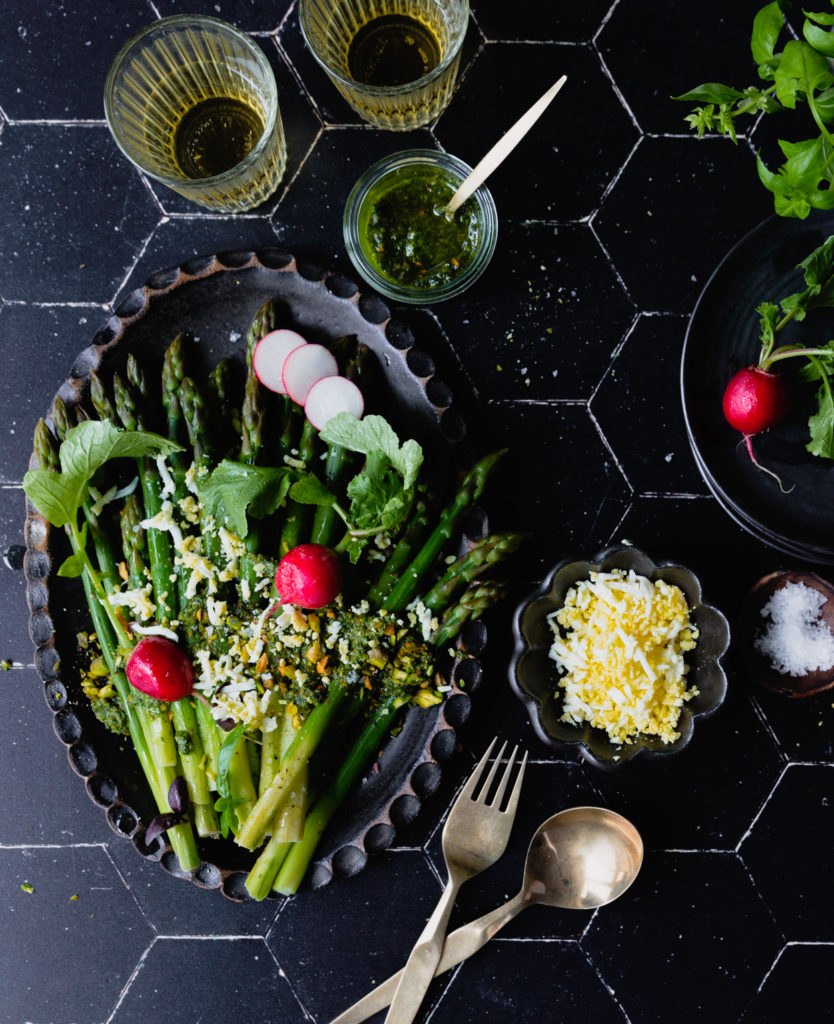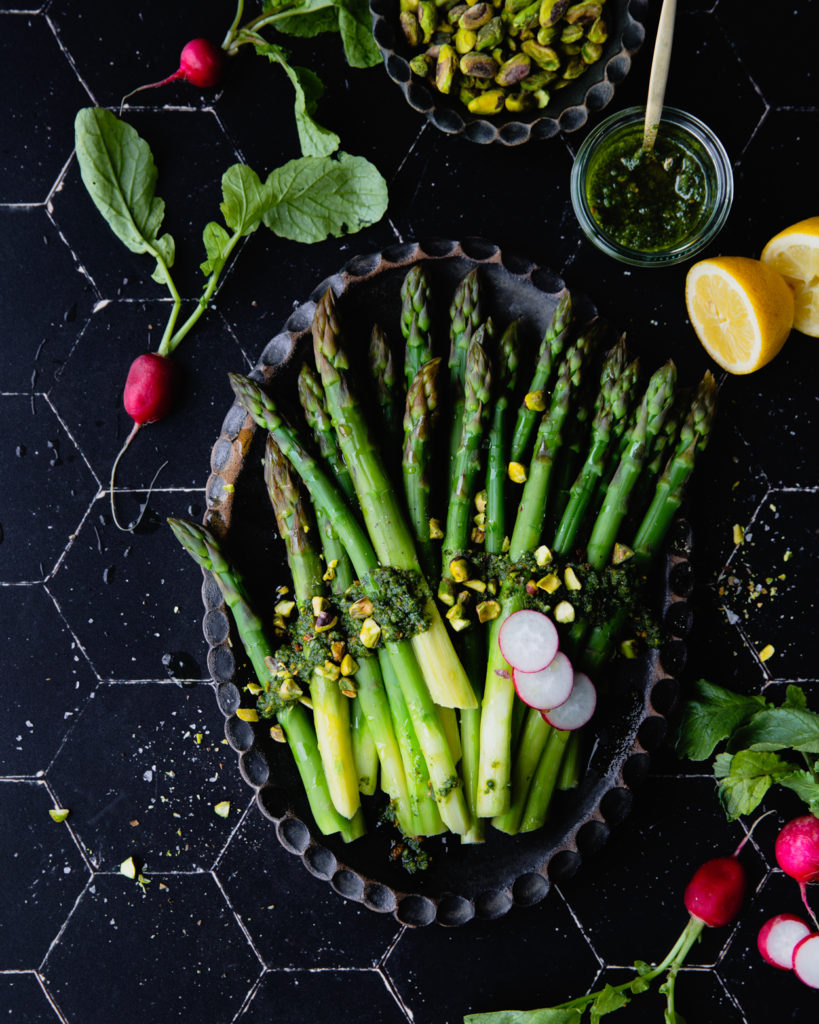
All winter long, I have been roasting my vegetables. While a roasted vegetable has its charms, hello charred cauliflower, there is something pure and simple about simply steaming or boiling vegetables. Asparagus works especially well when treated that way. It has a sweet, distinctly clean and grassy flavour that is masked if roasted.
Local asparagus has just started arriving in Ottawa. I prefer the thicker spears, and contrary to what you might think, the thicker spears are actually more tender. The fibre in thin stalks is more concentrated, making them actually tougher than their fat sisters. Thickness of an asparagus spear has nothing to do with age. A thin spear will not mature into a fat one. The determining factors are plant variety and age of the entire plant. Young plants produce slender spears. As the asparagus plants age, they tend to get fatter, much like humans!
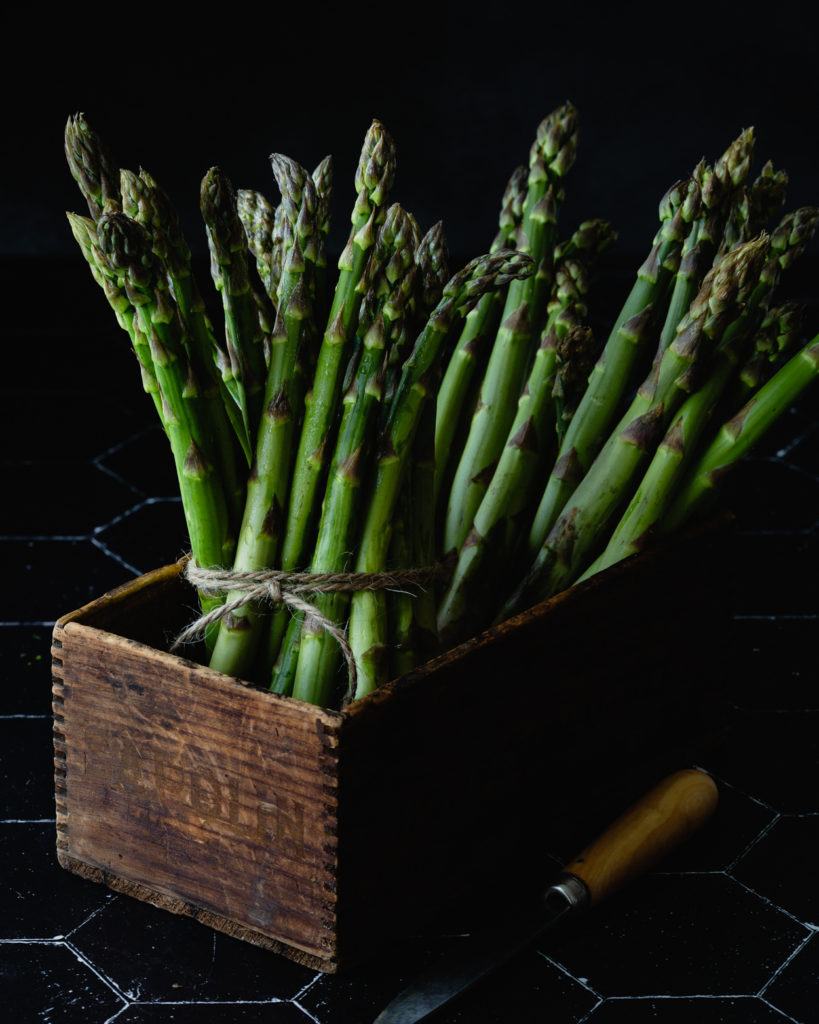
Let’s chat for a minute about the best way to trim the asparagus. So many recipes instruct you to hold each spear with two hands and bend. The asparagus will “naturally” break where it’s supposed to. The problem with this approach is twofold. One, you need to do it one spear at a time, and two, you actually waste a lot of good asparagus. The ends that snap off actually have a lot of tender green still attached to them. The best way to trim asparagus is to line up a bunch on your cutting board and look for where the darker green part starts to fade to white. Cut off those pale hard ends with a knife.
While it is not necessary to peel your asparagus after cutting off the tough ends, I would like to encourage you take the extra few minutes to do this. It’s how I was trained to do it in restaurants and it’s a habit that has stayed with me. The asparagus cooks more evenly and looks so much prettier without the outer skin on the bottom half.
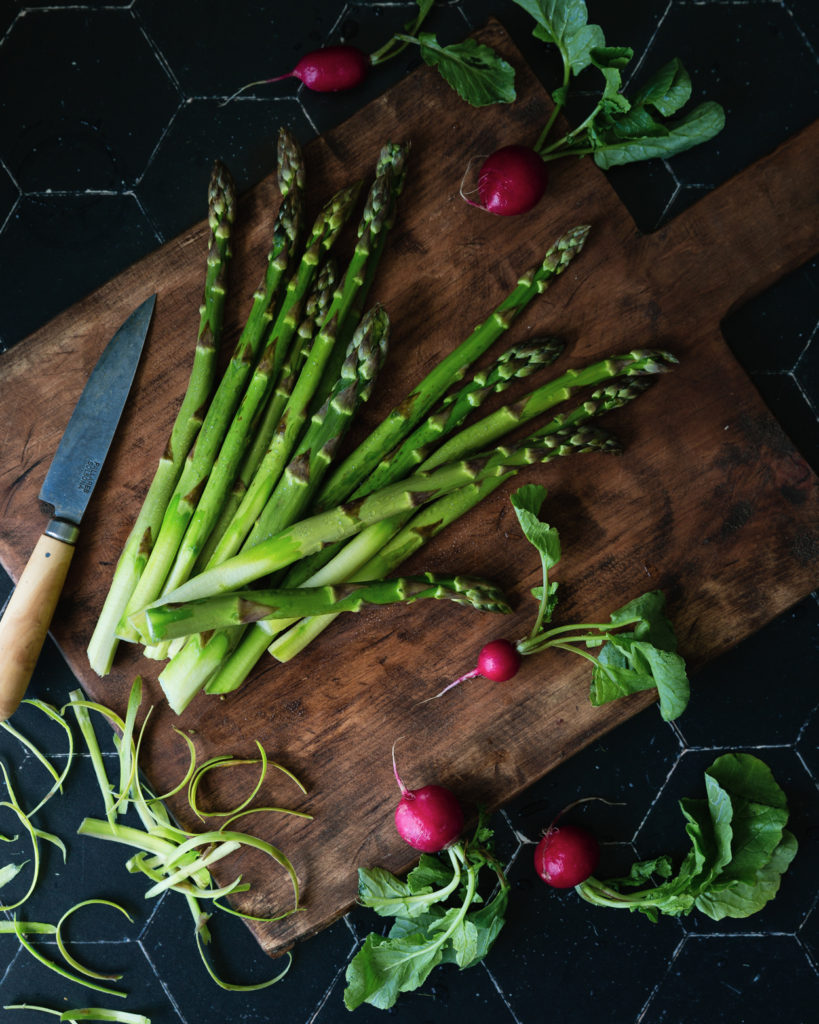
Instead of a vinaigrette for the asparagus, I decided to make a pistachio pesto. I want to share with you a great tip I learned, on how to keep your pesto from going brown. Add a small handful of blanched spinach to the food processor, along with the basil. The chlorophyll in the spinach helps delay the oxidation process.
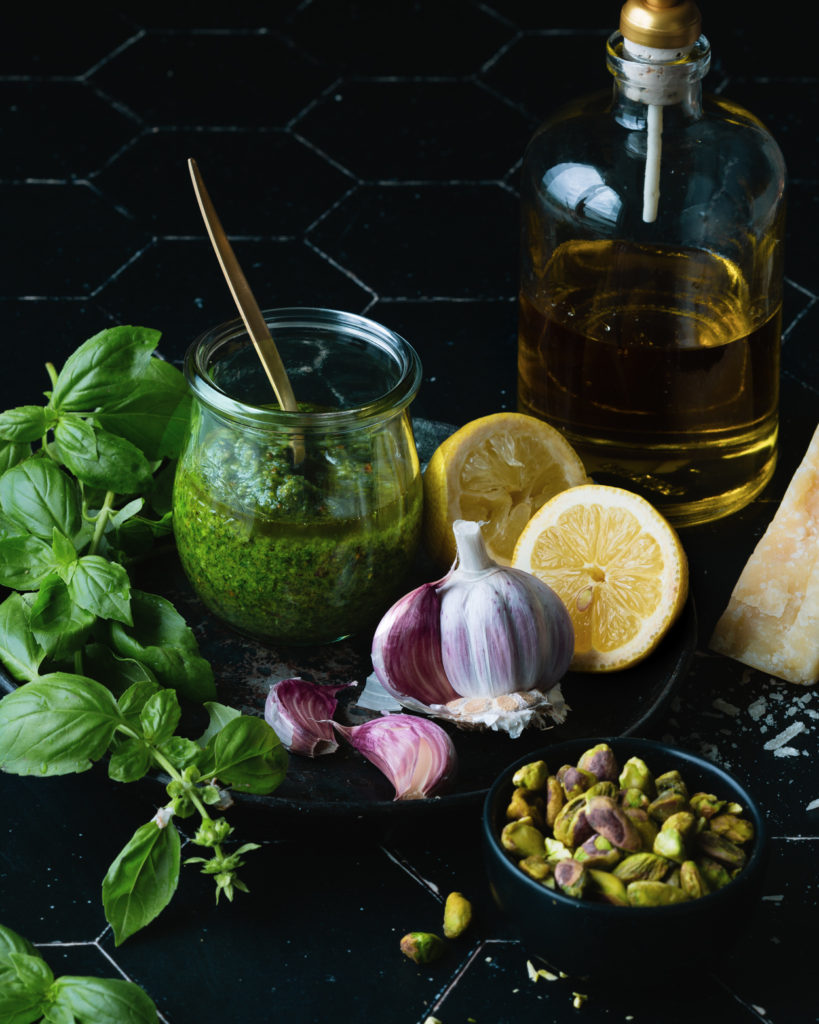
While pine nuts are traditional in pesto, I used pistachios instead. They enhance the green colour and I love the flavour. Make sure you toast them first and remember to toast a few extra to sprinkle on top as a crunchy garnish. If you want to make the dish more substantial, try grating a few hard-boiled eggs on the large holes of your box grater and serving this as an additional topping. Eggs and asparagus are a classic pairing.
